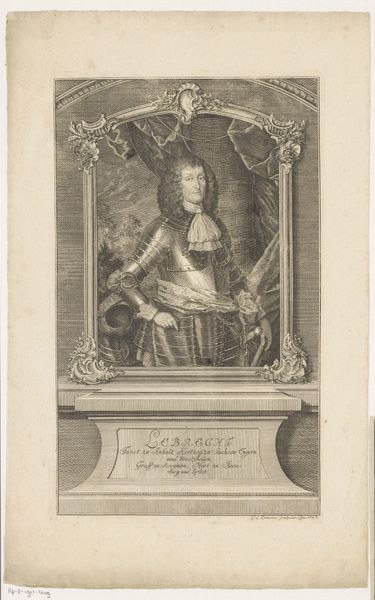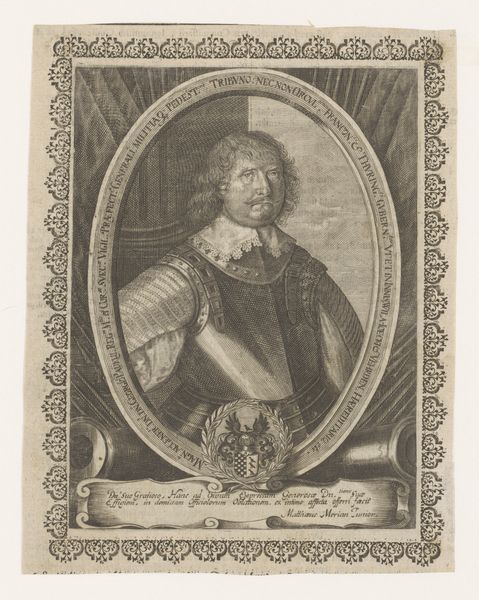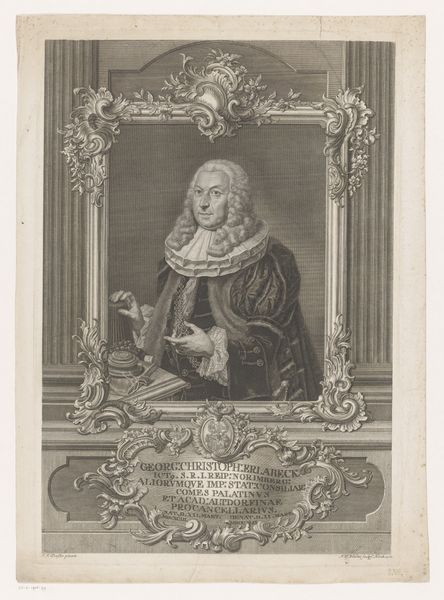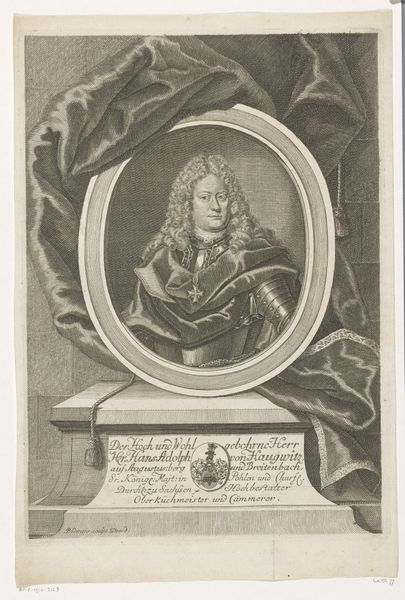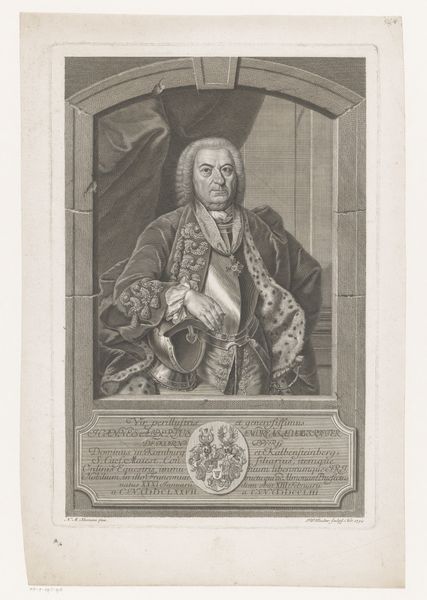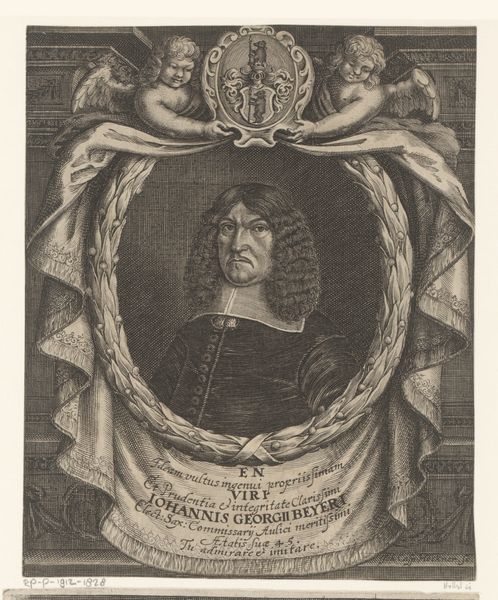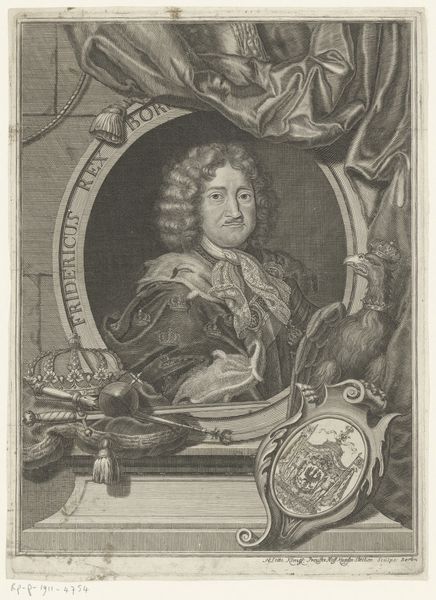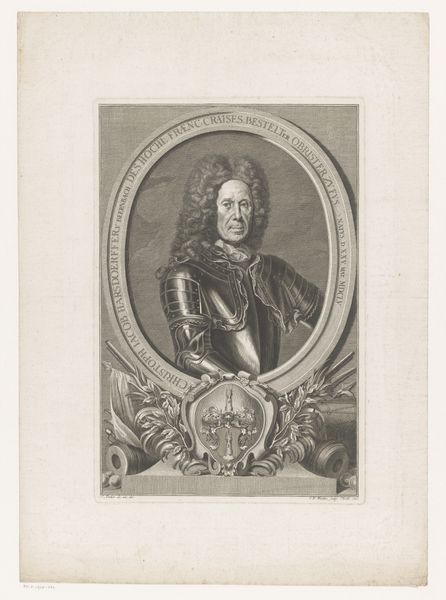
Portret van Maximilian Ferdinand Hoë von Hoënegg Possibly 1657 - 1670
0:00
0:00
johanncasparhoeckner
Rijksmuseum
Dimensions: height 283 mm, width 185 mm
Copyright: Rijks Museum: Open Domain
This print of Maximilian Ferdinand Hoë von Hoënegg was made by Johann Caspar Hoeckner using engraving, a process that speaks volumes about the era’s visual culture. Engraving is an intaglio process, meaning the image is incised into a metal plate, in this case most likely copper, using a tool called a burin. The incised lines are filled with ink, and then the plate is pressed onto paper. Look closely, and you’ll see the characteristic crispness of the lines, a testament to the engraver's skill. The abundance of detail suggests the great amount of labor involved. Each line meticulously carved contributes to the overall image, giving texture, depth, and tone. The symbolic elements surrounding the portrait, from the coat of arms to the Latin inscriptions, are rendered with equal care, highlighting the subject’s status and virtues. Prints like these were not just artistic expressions; they were vital forms of communication and social currency, crucial for disseminating images and ideas. Appreciating the labor and skill behind this engraving allows us to see it not just as a portrait, but as a product of its time, deeply embedded in the social and economic structures of 17th-century Europe.
Comments
No comments
Be the first to comment and join the conversation on the ultimate creative platform.
